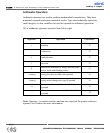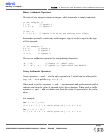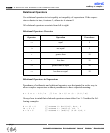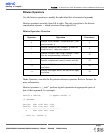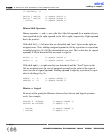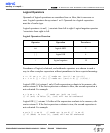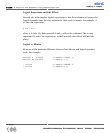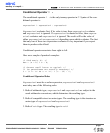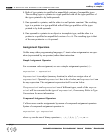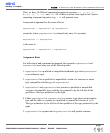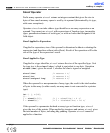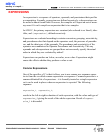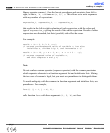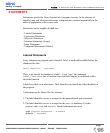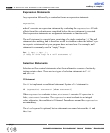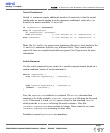
4. Both of type pointer to qualified or unqualified versions of compatible types.
The resulting type is a pointer to a type qualified with all the type qualifiers of
the types pointed to by both operands.
5. One operand is a pointer, and the other is a null pointer constant. The resulting
type is a pointer to a type qualified with all the type qualifiers of the types
pointed to by both operands.
6. One operand is a pointer to an object or incomplete type, and the other is a
pointer to a qualified or unqualified version of
void. The resulting type is that
of the non-pointer-to-
void operand.
Assignment Operators
Unlike many other programming languages, C treats value assignment as an oper-
ation (represented by an operator) rather than instruction.
Simple Assignment Operator
For a common value assignment, we use a simple assignment operator (=) :
expression1
=
expression2
Expression1
is an object (memory location) to which we assign value of
expression2
. Operand
expression1
has to be a lvalue, and
expression2
can
be any expression. The assignment expression itself is not an lvalue.
If
expression1
and
expression2
are of different types, result of the
expres-
sion2
will be converted to the type of
expression1
, if necessary. Refer to Type
Conversions for more information.
Compound Assignment Operators
C allows more comlex assignments by means of compound assignment operators.
Syntax of compound assignment operators is:
expression1 op
=
expression2
where
op
can be one of binary operators +, -, *, /, %, &, |, ^, <<, or >>.
mikroC
- C Compiler for Microchip PIC microcontrollers
mikroC
making it simple...
11 0
MikroElektronika:
Development
tools
-
Books
-
Compilers
page



